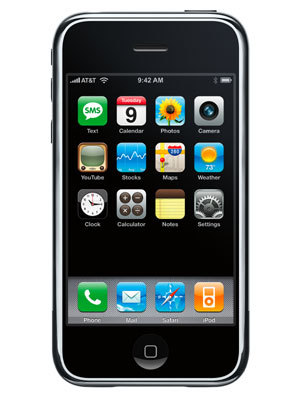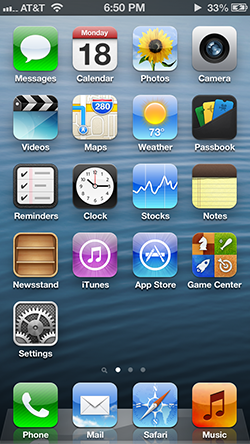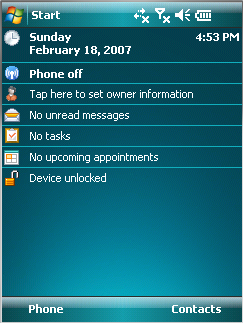iOS and The State of Innovation
Quite a few people have been commenting on an ostensible lack of innovation on the part of Apple when it comes to iOS. Search the word “stale” in relation to iOS and you’ll find yourself with enough content for a leisurely Saturday afternoon. Is this critique warranted in light of the mobile landscape that iOS competes in?
Preface and a Confession
Before I begin this conversation, let me put this out there – I use iOS but I use multiple Android devices and I tend to prefer Google’s Linux based solution. Despite this, I depend on iOS every day for my media needs (I use my iPod Touch constantly) and consequently, I make heavy use of each platform on a daily basis. I will also be the first to admit that if, given the proper integration of the sync services that I depend on, I’d be using a Windows Phone device without question. It should be clear at this point that I hold no particular allegiance to any specific platform and as such, what follows is not an attempt to defend or levy critique against any platform based on some personal dedication.
The State of iOS
Starting with the release of iPhone 5, reviewers in the tech community started laying out the now commonplace critique of iOS as antiquated in an ever increasingly competitive market. Take for instance The Verge’s review which concluded the following:
Don’t get me wrong, iOS is a beautiful and well-structured mobile operating system — but it’s begun to show its age. It feels less useful to me today than it did a couple of years ago, especially in the face of increasingly sophisticated competition. I always have this sense now in iOS of not knowing where I am, what my status is — constantly having to load things and reload them. It feels tiring.
Such critique popped up elsewhere and has come to define the critiques around the state of iOS. Some of these critiques have been rather superficial, picking apart iOS’ rather “historically consistent” interface and UI design:
Apple’s iOS feels stale to me, and that’s probably because is hasn’t gotten a huge visual or interactive overhaul since its initial release (source).
The focus on aesthetics is a common theme in the growing realm of critique around iOS. Such criticism is mirrored in a recent Wired article:
The look and feel of iOS has remained largely unchanged since Apple unveiled it in June 2007. Don’t mess with a good thing? Well sure. But it’s also led some to argue that the platform is growing stale, or that Apple isn’t innovating as quickly as its competitors are. While that’s not entirely true, it is growing increasingly clear that iOS is in need of a facelift (source).
Such a commentary, while perhaps neglecting the core changes, is not without its merits despite the superficial nature. On the face of it, iOS looks the same now as it did back in 2007. Take the following as a comparison:


Aside from a change in the Dock’s background and a few new icons, the home screen is the same. Icons are still rounded off squares and either flat or glossy with a concave contrast. The innards of the OS design also remain largely the same as Cocoa Touch hasn’t received much of a facelift since the original iteration. Aside from a few colour changes, iOS looks and operates in the same fashion it did six years ago. In this respect, the critiques around the aesthetics of iOS are warranted in light of a mobile OS landscape that is not only rapidly pushing UI interaction but the pace of development. Take Windows Mobile/Phone as a contrasting metric. In 2007, when the iPhone was introduced, Windows Mobile looked like the following:

Six years later, we have the following:

The progress by Microsoft in UI design and whether or not it’s an improvement is up for debate but the evolution of the platform over the last six years is evident. The Android UI aesthetic, although not as evolutionary as Windows Phone, has certainly seen its fair share of progress over a similar time frame. However, evolution in UI design is only one part of the puzzle despite what might some might argue (that design is a central feature).
Under the Hood: Is the Lack of Inspiration Only Skin Deep?
The answer to this question is yes and no. In many ways, iOS is still very much a modern operating system capable of meeting the needs of most mobile device users. In this respect, the unchanging interface design belies iOS’ ability to, with relative ease, meet the needs of most users. In other ways, iOS’ “historic consistency” has prevented it from exploring and pushing users to use their devices in new ways. A nice metaphor is thinking about iOS as if it were a firework show with only one fireworks – there was a momentary burst of panache that has lingered up until the recent slate of critiques (six years isn’t bad). Despite this, iOS has had some major changes that have revolutionized user interaction with their devices. As I will now discuss though, these changes are fairly banal in the shifting mobile market.
Major structural changes to iOS generally fall into one of two categories. The first is the “revolutionary but now standard” change. The prime example of this is the App Store. When it was introduced, it shifted user understandings of how mobile applications would be purchased and used (despite it being a simple adaptation of the iTunes model that Apple had just about perfected). The other is the “catch up” change, those incremental changes that Apple has made to keep pace with evolutionary changes. Some examples of this are the introduction of the drop down notification system and the introduction of iCloud which provides simple setup for the IMAP, CalDAV and other services offered elsewhere. This is not to minimize the importance of such developments – they have all become staples of mobile usage patterns. Rather, the ability to categorize many of iOS’ developments into one of these two categories suggests that Apple has been working to keep iOS operating at the level of status quo. Those major improvements that don’t generally fit into either of these offer little in beneficial changes. The perfect example of this is Apple Maps. The Maps application was not designed to catch up to someone nor was it a revolutionary change when it was introduced because it offered little that wasn’t offered elsewhere (yes, things were added but nothing “revolutionary”). In fact, many users see it as a step backwards and although the jury might still be out on this one (the situation has either gotten better or people don’t care enough to complain anymore), the new Maps application simply offered a different take on something that it had before without pushing any new boundaries.
Despite the aforementioned, Apple has certainly introduced some functionality that has shaped user/mobile interaction. Take Siri for example. Regardless of whether or not people use Siri regularly, voice activated functionality has become a major space of innovation and Apple is solely responsible for precipitating this “feature race.” Passbook has accomplished the same, pushing Apple’s main competitor Samsung to introduce similar functionality for their Android devices (source). In other ways, Apple has functionality built in that doesn’t exist elsewhere (to the best of my knowledge) including “Find my iPhone,” something I really hope becomes standard in other platforms (hint hint Google…).
Many may make the argument that, even if Apple appears stale in the face of new innovations from competitors, it still pulls it all together with an elegance not seen on other platforms. In other words, it’s possible to argue that even if the functionality is largely a reflection of that found in Apple’s competition, the implementation is better on iOS. There is something to be said for this argument given Apple’s demand that iOS stay unmodified when sold through a carrier. This certainly gives it an edge over Android since these modifications to the OS generally add little except increased inconsistency across devices. This however doesn’t differentiate iOS from Windows Phone which, although the devices may come with carrier bloatware, does not stop the end user from removing it (source).
Conclusion
The discussion thus far might lead you to believe that I think iOS is rather stagnant or uninspired to a fault. If you think this, you are partially right in your conclusions. I do feel that it’s stale but such stagnancy hasn’t proven to be a detriment to the platform as of yet. While many commentators seem to be throwing around the word stale without reservation, some have different interpretations of the implications. Some appear to think that the lack of innovation has left iOS boring and joyless while others seem to be more optimistic despite the lethargy. Regardless of what either side says, the stagnancy is a common thread and one that will hopefully be corrected in the next iteration of Apple’s mobile platform.
An alternative interpretation here is one that articulates stagnancy as a positive. There is something to be said for playing things conservatively and not rocking the boat on what has proven to be a robust and comprehensive platform. iOS, since its inception, has proven to be effective at drawing in developers who have done wonderful things with the tools that Apple has provided. By offering up a consistent platform that isn’t subject to radical changes, Apple can reassure developers and users that the experience they love will be simple, accessible and familiar. In this way, a rather intractable disposition about change to the major dynamics of iOS is a benefit for a community that has not only learned but come to love what Apple has done for their mobile experiences.
